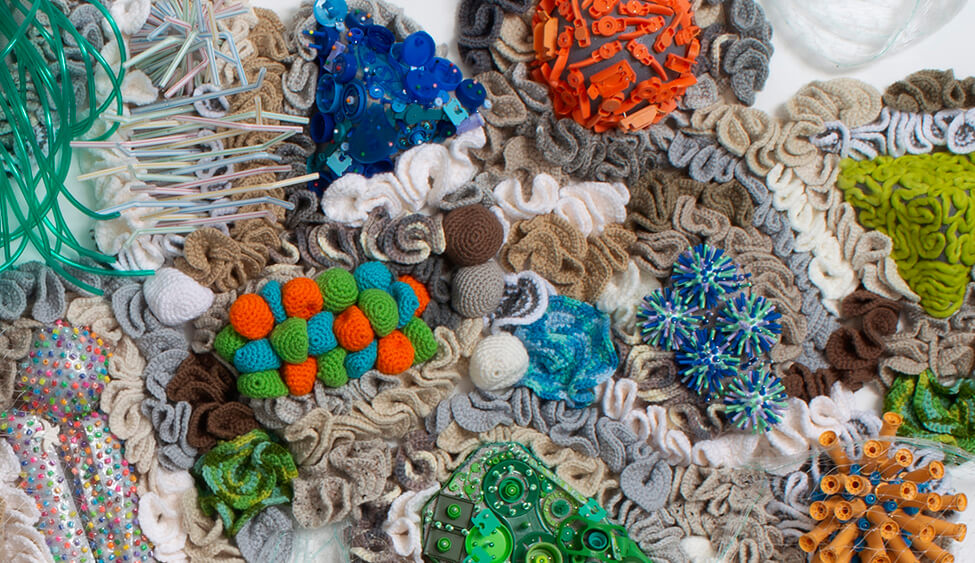The UCSF Library Artist in Residence program was launched in 2020 and continues to exceed our expectations. The program serves as an intersection of arts and sciences and brings a humanities dimension to our health sciences campus. It also enables the library to open its special collections holdings that are often perceived as exclusive and inaccessible. The Makers Lab collaboration connects artists with state-of-the-art tools as well as provides expert support for fulfilling their creative ideas.
We are excited to introduce the 2024 artist Ruth Tabancay and welcome her back to UCSF. Ruth commenced her year-long residency on July 1, 2024.
About the residency
As the UCSF Library Artist in Residence, I will be continuing my research into the adverse effects of global warming and plastic accumulation on the planet. For this, I’ll be researching the Fossil Fuel and the Chemical Collections in the Industry Documents Library to find early communications within those industries, responses to government regulations, and how these industries presented themselves to their stockholders and the public. The artwork I make for the final exhibition will incorporate plastic discarded at UCSF from various departments and locations to highlight the contributions that medical centers make to the growing mass of plastic waste. I will look at more current literature to see how Big Oil and the plastic industry perpetuate the myth of plastic recycling.
Currently, I am focused on two main bodies of work. One looks at the effects of rising ocean temperatures on the world’s coral reefs, coral bleaching. A second body of work looks at the ability of organisms to digest plastic, specifically, darkling beetle species and wax moths (Tenebrio species, Zophobas morio and Galleria mellonella) that devour polystyrene and polyethylene. An imagined extension is that other organisms such as fungi and bacteria could digest plastics as well.
Ruth Tabancay
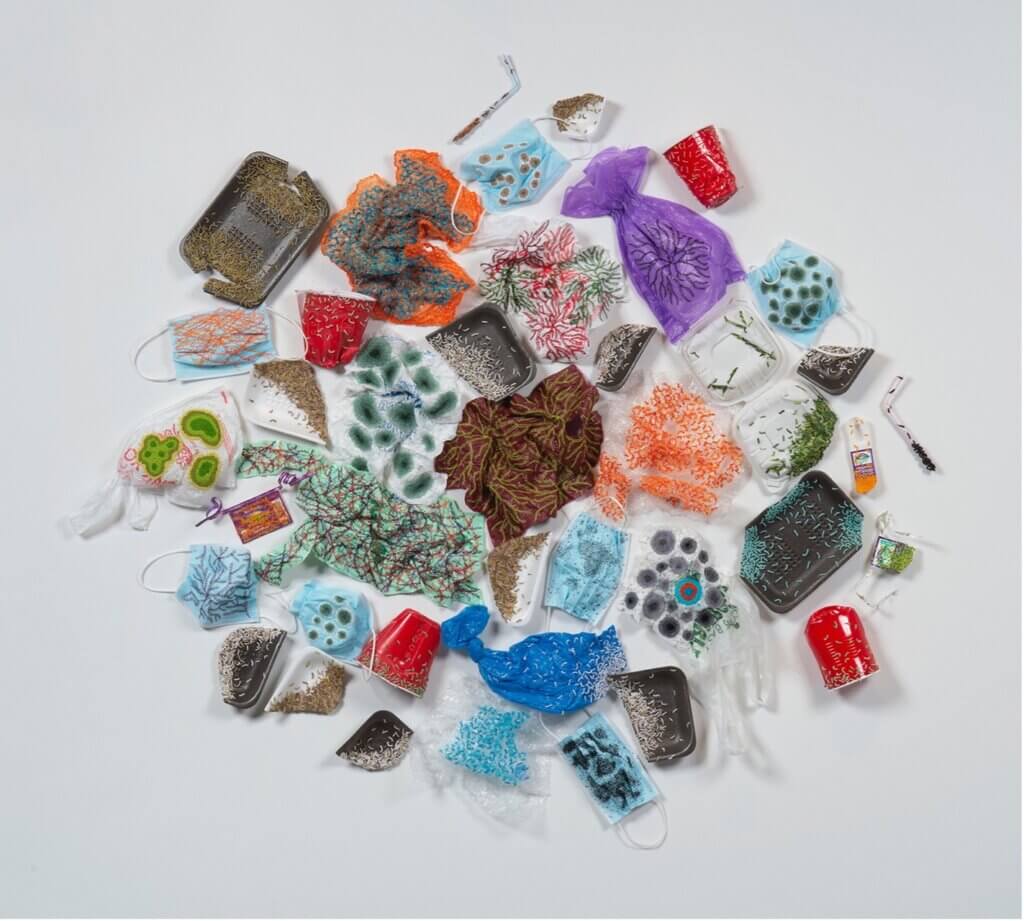
Ruth will share updates on her project and upcoming workshops on the UCSF Library Artist in Residence webpage.
About the artist
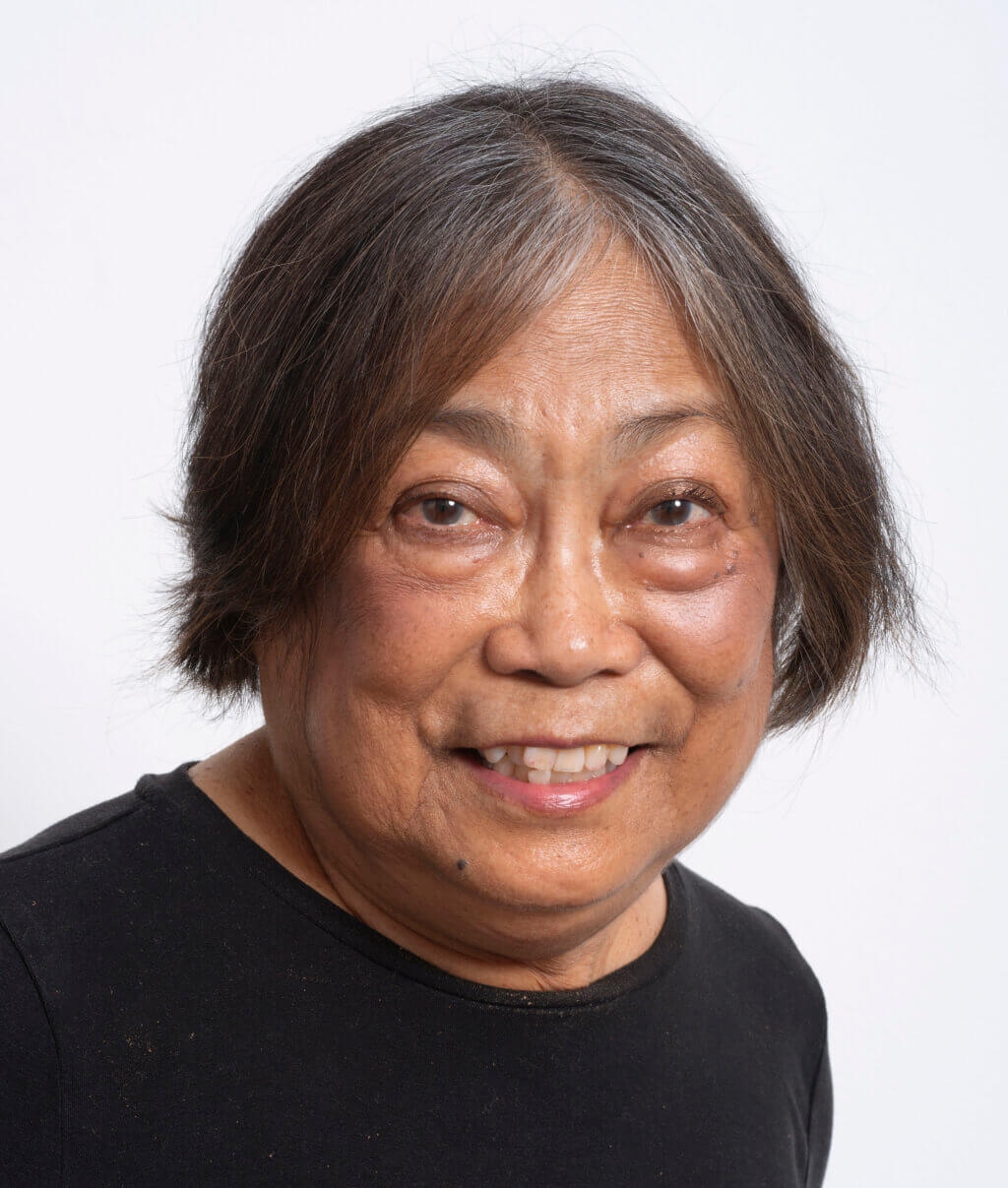
Ruth Tabancay began her adult professional life as a hospital laboratory technologist, then as a physician in private practice, and finally as an exhibiting artist. An innate love of science led her to major in Bacteriology in college which would form the basis of her early artwork. Then, her concepts centered around microscopy and scale using the textile techniques – crochet and knitting – that she taught herself as a child as well as the scanning electron microscope, computerized Jacquard loom, and textile techniques such as felting, embroidery, and material-based art. More recently her work concerns environmental issues such as bleaching of the coral reefs, organisms’ ability to digest plastic, sustainable alternatives to fast fashion, and ecological systems such as mycorrhizal networks and bee colonies.
She is a graduate of University of California, Berkeley; University of California, San Francisco, School of Medicine; and California College of the Arts. Her work has been exhibited nationally and regionally including The Textile Museum, Washington, D.C.; World Financial Center, New York City; Museum of Craft and Design, San Francisco; San Jose Museum of Quilts & Textiles. She lives In Berkeley, California.
Learn more about Ruth’s work: www.ruthtabancay.com • @ruth_tabancay on Instagram • ruth.tabancay on Facebook
Q&A with Ruth
Why did you apply for the UCSF artist in residence program?
I learned about the UCSF Artist is Residence program from artist colleague Pantea Karimi, the second artist to complete this residency. As she described her research, access to materials, and access to the Makers Lab to me, I knew that the demands of the residency could take my present work into a more focused state and would suggest new concepts yet unknown to me. I have always been interested in the process of taking multiple sources of information to restate it in my voice, so the research aspect of the residency appealed to me. I have a unique affection for UCSF, where I went to medical school, had my lung transplant, and continue to be cared for by UCSF doctors. This institution has played, and still plays a key role in my life. I look forward to being connected in this way through research, art, and contributing to the UCSF community.
What are you most excited to work on?
I began collecting medical plastic waste at the onset of my lung disease in 2013. This collection accelerated after a lung transplant in 2019. Compared to a single person’s collection, the plastic discarded at a medical center is astounding! That I would have access to this range and quantity of plastic could greatly impact the work I make during the residency.
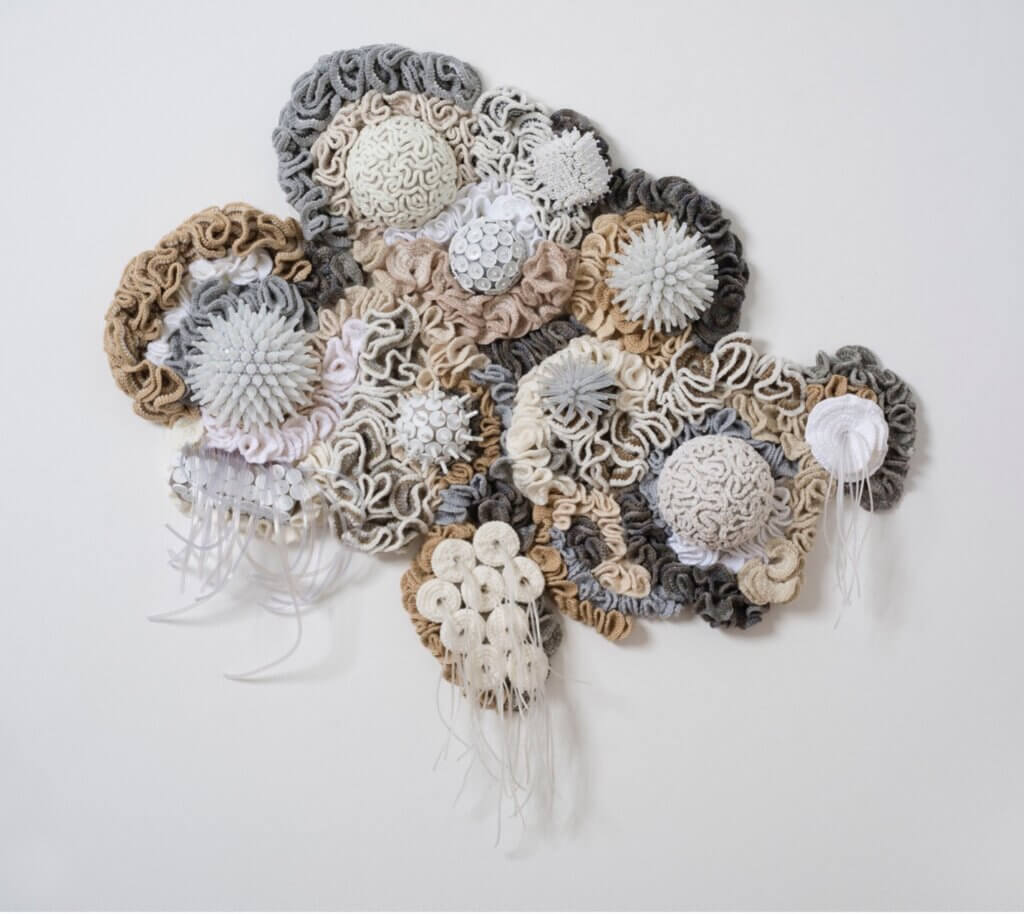
What challenges do you foresee?
I’m looking forward to learning to use the technological tools of the Makers Lab. Since I work mostly with tactile materials, the challenge will be how to integrate the tangible with computer-produced objects and images. I find that adding a new aspect to what is known can stimulate fresh ideas.
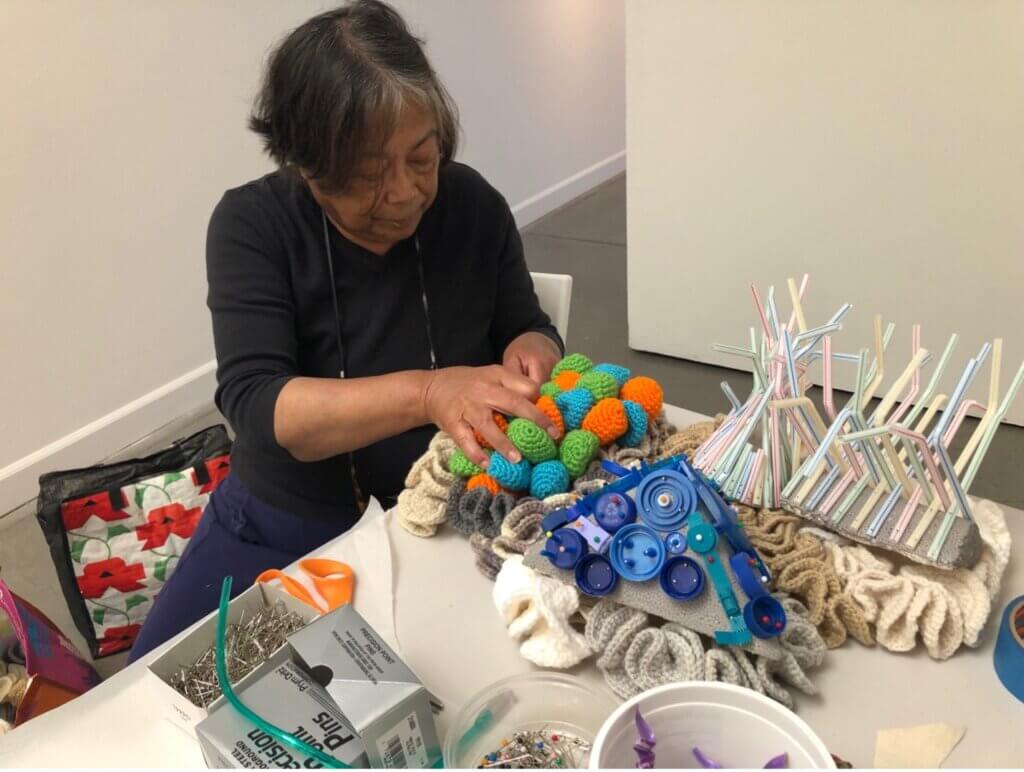
What is the role of arts in the health sciences?
Health education can look toward the arts for a new understanding of science. In art school, years after I had finished my medical education, it occurred to me how much more interesting and meaningful my study of human anatomy would have been if I’d looked at the body as sculpture and organs, muscles, and blood vessels in sculptural relationships. On another level, the arts help us visualize what’s hidden in the human body and are an essential tool for communicating with patients. Artistic renderings, such as drawings and models, help explain normal tissues and pathological states. On the cellular and molecular level, the arts make visible what would otherwise be unseen. More than a straight representation, artistic imagination can isolate disease conditions, track natural body cycles, and depict physiological processes. Still images, video and animation, and audio media alone and in combination are powerful communication modes.
Thank you to the people behind the program
We are grateful to the following UCSF colleagues for their commitment of time and effort when serving on the 2024 UCSF Artist in Residence review committee:
- Eushavia Bogan, UCSF School of Medicine, MD candidate
- Xiaochen Zhong, UCSF School of Medicine, MD candidate
- Susie Kuo, UCSF EVCP, executive analyst
- Dr. Stephen McLeod, UCSF Ophthalmology department, professor and chairman
- Kirk Hudson, UCSF Library, facilities manager
- Dylan Romero, UCSF Library Makers Lab, manager
- Polina Ilieva, UCSF Library, associate university librarian for collections and university archivist
Featured image: Plastic Reef, detail, 2024. Crochet, assemblage. Plastic discards, polystyrene, pins, canvas (60″ x 108″ x 10″), Photo: Dana Davis
